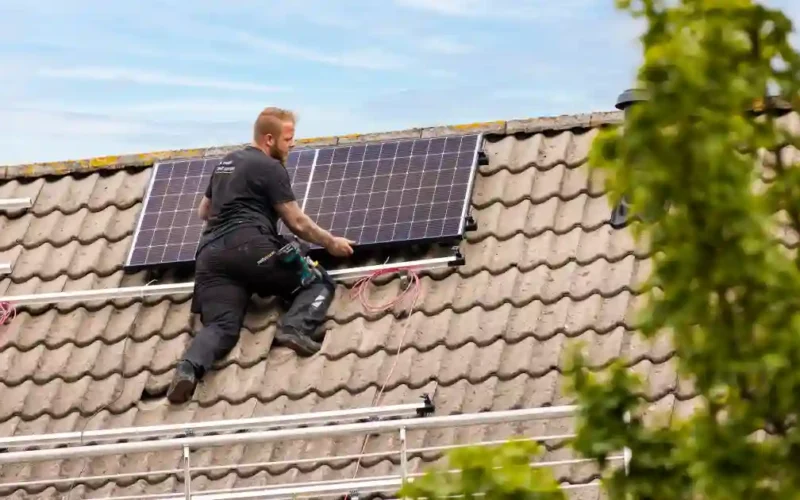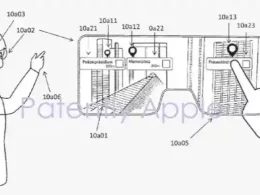Solar energy is rapidly gaining popularity as a clean and sustainable source of power, with solar panels at the forefront of harnessing sunlight and converting it into electricity. However, the process isn’t as simple as it may seem. Solar panels generate direct current (DC) electricity, which must be converted into alternating current (AC) to be compatible with most appliances and the electrical grid. This vital conversion is accomplished by solar inverters, making them a critical component of any solar panel system. In this comprehensive guide, we will explore the role of solar inverters, their types, and their significance in maximizing the efficiency of your solar energy system.
Understanding the Solar Inverter
At its core, a solar inverter is an electronic device that plays a pivotal role in converting DC electricity produced by solar panels into AC electricity, which can be used to power your home or business. The conversion process is essential because most of the electrical devices and appliances we use, as well as the electrical grid itself, operate on AC power.
Here’s how the solar inverter functions in a solar panel system:
- DC to AC Conversion: Solar panels generate DC electricity when exposed to sunlight. This DC power flows into the solar inverter.
- Inversion Process: The solar inverter performs a complex process called inversion, which converts the DC power into AC power with the correct voltage, frequency, and waveform for your electrical needs.
- Energy Export: If your solar panel system generates excess electricity that you don’t consume immediately, the solar inverter can send the surplus energy back to the electrical grid, often through a process called “net metering.” This allows you to receive credit for the excess electricity and reduces your energy bills.
- Monitoring and Control: Many modern solar inverters also offer monitoring capabilities, allowing you to track the performance of your solar panel system and identify any issues. Some inverters can even be remotely controlled or adjusted for optimal operation.
Types of Solar Inverters
Solar inverters come in several different types, each with its own characteristics and applications. The choice of inverter depends on factors like your budget, system size, and specific requirements. Here are the main types of solar inverters:
1. String Inverters
- Function: String inverters are the most common type and are suitable for residential and small commercial installations. They connect multiple solar panels in a series, forming a “string,” and then convert the DC electricity generated by the string into AC power.
- Advantages: Cost-effective, easy to install, and relatively reliable. They are a good choice for straightforward installations.
- Drawbacks: The performance of the entire string can be affected by shading or debris on just one panel. String inverters may not be the best choice if your solar panels have varying orientations or are subject to shading.
2. Microinverters
- Function: Microinverters are installed on each individual solar panel in a solar array. They convert the DC power generated by each panel into AC power directly at the panel.
- Advantages: Microinverters can maximize the overall efficiency of a solar panel system by reducing the impact of shading or panel orientation. They also offer better monitoring capabilities for individual panels.
- Drawbacks: Microinverters are typically more expensive than string inverters, and their installation can be more complex.
3. Power Optimizers
- Function: Power optimizers are similar to microinverters but are installed at the panel level to maximize the efficiency of each panel. They optimize the DC power output of each panel before sending it to a central string inverter.
- Advantages: Like microinverters, power optimizers can mitigate the impact of shading or panel orientation, improving system performance. They also offer monitoring capabilities for individual panels.
- Drawbacks: Power optimizers are often used in conjunction with string inverters, making the overall system more complex and potentially costlier than a traditional string inverter setup.
4. Hybrid and Battery Inverters
- Function: Hybrid and battery inverters are designed to work with energy storage systems, such as batteries. They not only convert DC power into AC power but also manage the charging and discharging of batteries, allowing you to store excess energy for use during cloudy days or at night.
- Advantages: These inverters provide energy independence and resilience by allowing you to store surplus energy. They are ideal for homeowners looking to reduce their reliance on the grid or have backup power during outages.
- Drawbacks: Hybrid and battery inverters tend to be more expensive than standard inverters and may require additional equipment, such as batteries, to fully utilize their capabilities.
5. Grid-Tied and Off-Grid Inverters
- Function: Grid-tied inverters are designed to connect your solar panel system to the electrical grid, allowing you to sell excess energy back to the grid and draw power when needed. Off-grid inverters, on the other hand, are used in standalone solar systems that are not connected to the grid. They are typically paired with batteries for energy storage.
- Advantages: Grid-tied inverters allow you to take advantage of net metering and reduce your energy bills. Off-grid inverters provide self-sufficiency in remote or rural areas without access to the grid.
- Drawbacks: Grid-tied inverters rely on the grid for backup power, so they won’t provide electricity during grid outages. Off-grid systems can be costly due to the need for batteries and additional equipment.
The Significance of Solar Inverters
Solar inverters are often referred to as the “brains” of a solar panel system because of their critical role in energy conversion and management. Here are some key points highlighting the significance of solar inverters:
- Energy Efficiency: Solar inverters play a crucial role in optimizing the efficiency of your solar panel system. By converting DC power into usable AC power, they ensure that you get the most out of your solar panels.
- Monitoring and Control: Many modern solar inverters come equipped with monitoring systems that allow you to track the performance of your solar panel system in real time. This information can help you identify and address any issues promptly.
- Grid Integration: Solar inverters enable your solar panel system to seamlessly integrate with the electrical grid. This means you can not only consume the energy you produce but also export excess energy for credits or compensation.
- Adaptability: Different types of solar inverters cater to various solar panel system setups, making them adaptable to specific needs and challenges, such as shading or variable orientations.
- Battery Management: Hybrid and battery inverters offer the capability to store surplus energy in batteries for later use, enhancing your energy self-sufficiency and providing backup power during outages.
- Future-Proofing: As solar technology evolves, solar inverters are continually being improved and upgraded. Investing in a high-quality inverter can future-proof your system and make it compatible with new advancements.
Conclusion
Solar inverters are indispensable components of solar panel systems, responsible for converting DC electricity into AC power and ensuring that your solar energy system operates efficiently and effectively. The choice of solar inverter type depends on various factors, including the size of your system, budget, and specific requirements.
When considering a solar panel installation, it’s essential to consult with a reputable solar installer or technician to determine the most suitable inverter type for your needs. By understanding the significance of solar inverters and their various types, you can make an informed decision that maximizes the benefits of your solar panel system, from energy efficiency to grid integration and future adaptability.











